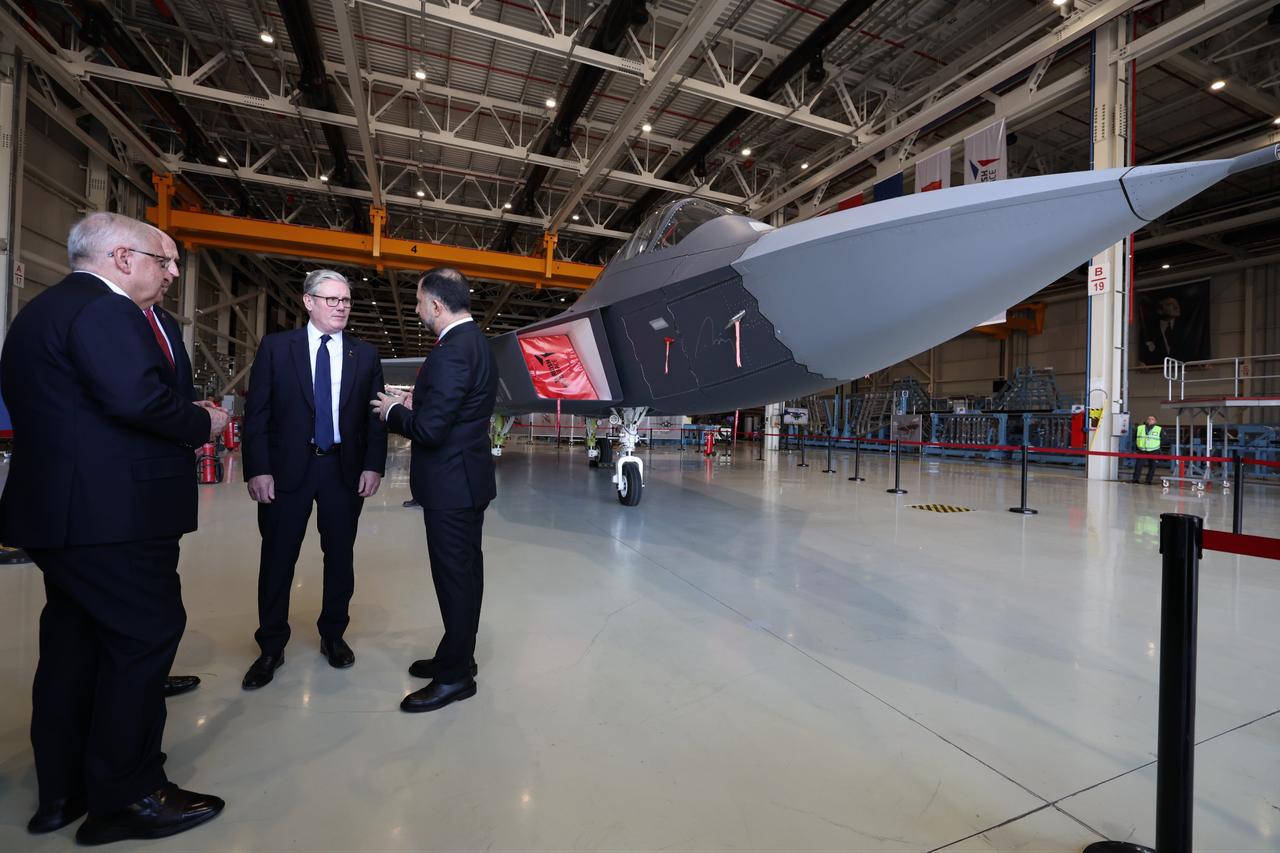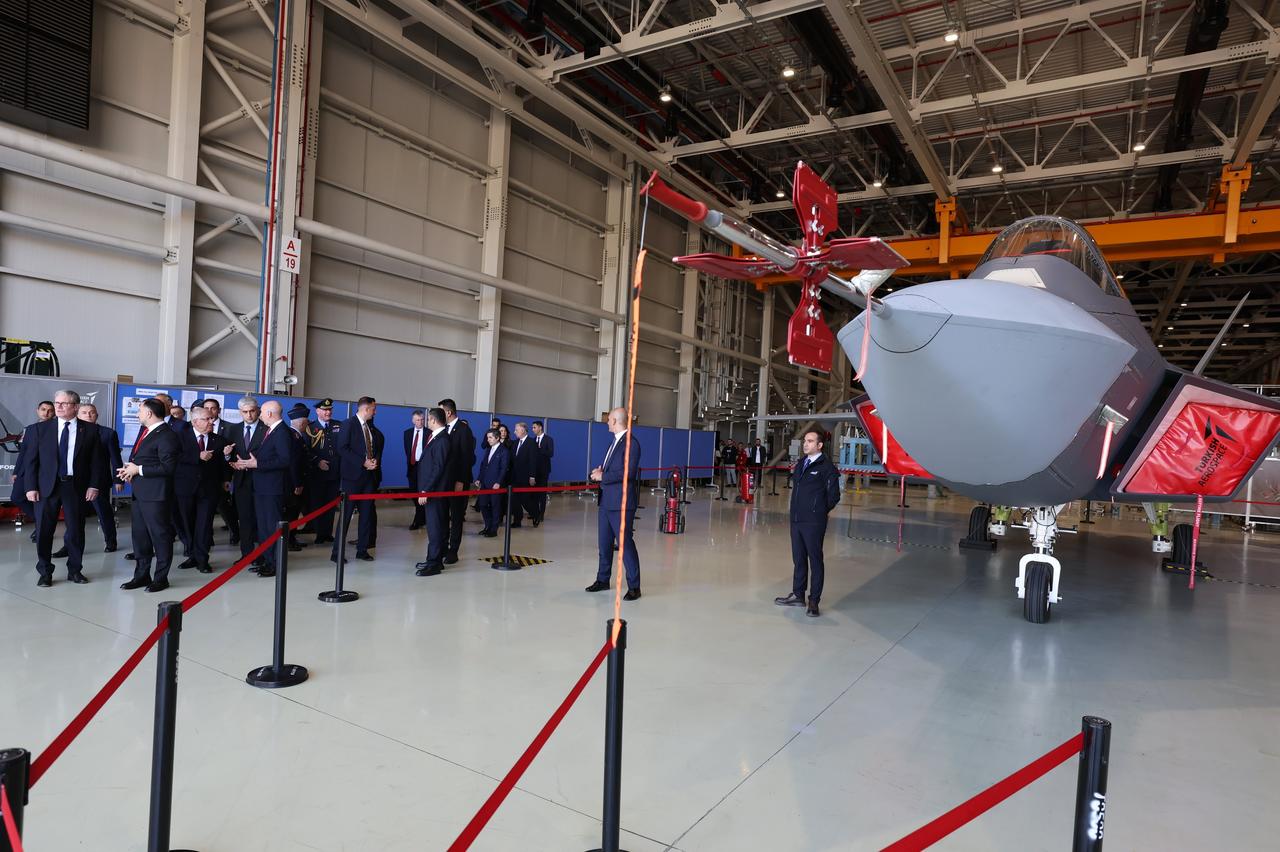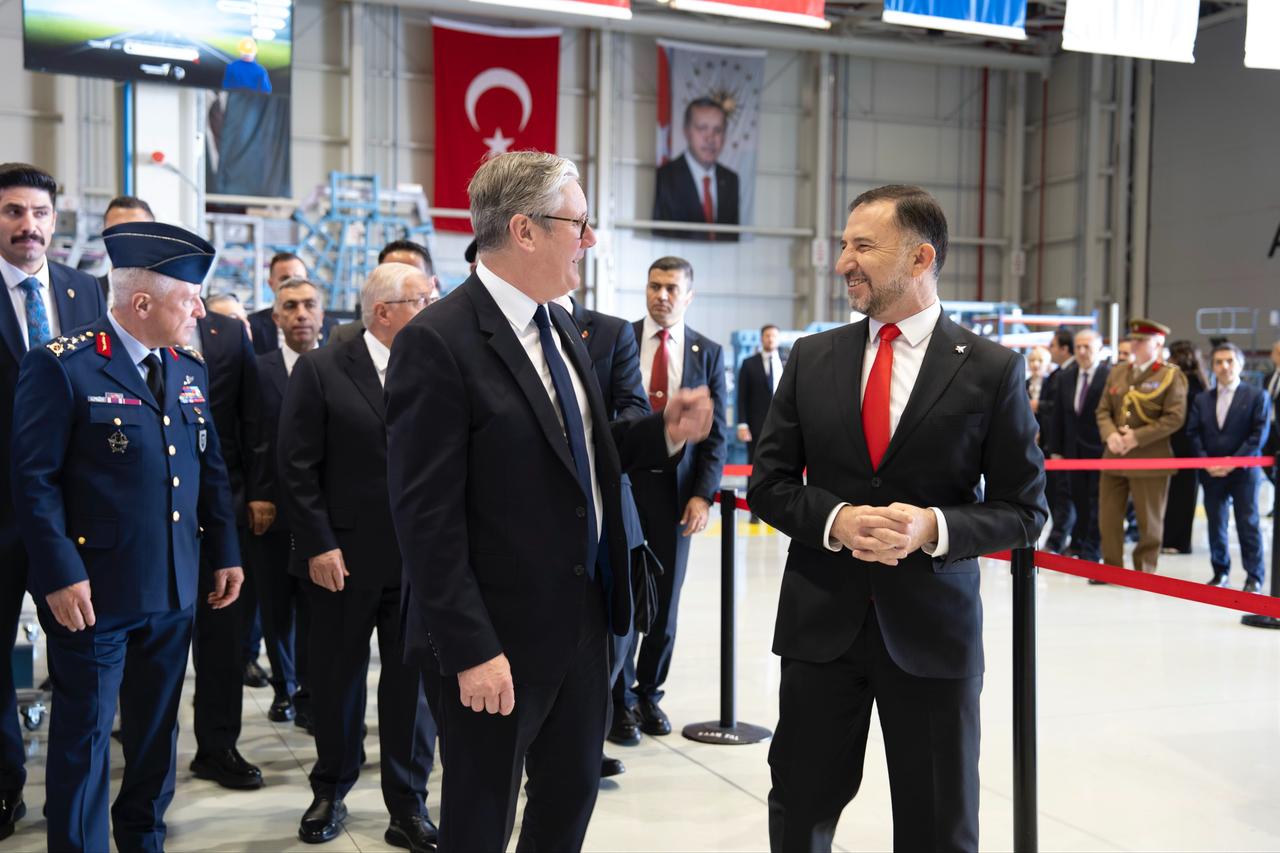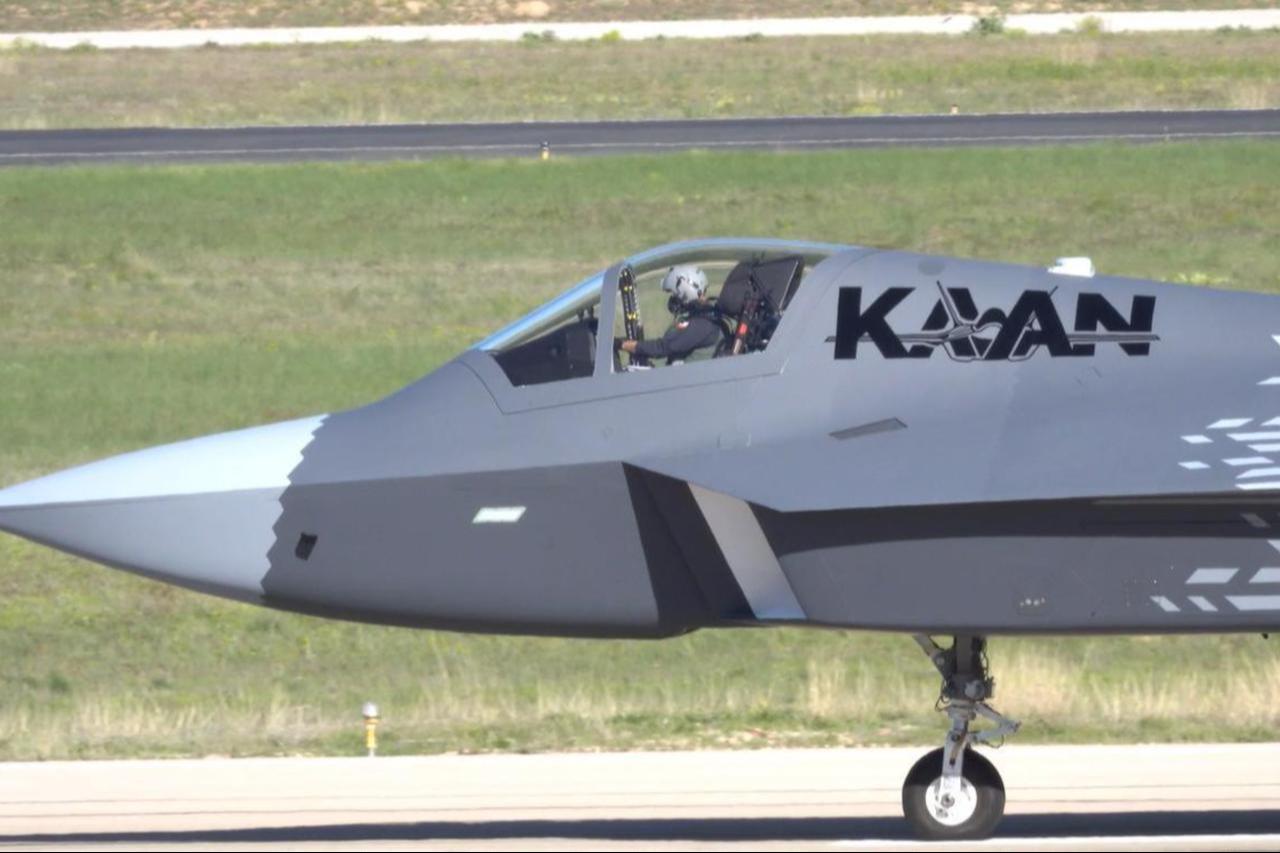
United Kingdom Prime Minister Keir Starmer visited Turkish Aerospace Industries (TAI) Kahramankazan facilities to receive a briefing on KAAN, Türkiye's domestically designed and developed indigenous fighter aircraft.
Following a reception ceremony at Murted Air Base Command, Starmer proceeded to TAI with Turkish Defense Minister Yasar Guler.
The Ministry of Defense shared photographs from the visit documenting Starmer's tour of the KAAN development program facilities.
Attending the TAI visit were U.K. Defense Secretary John Healy, Turkish Air Force Commander General Ziya Cemal Kadioglu, and UK Royal Air Force Commander General Harv Smyth.
European Defense Editor at Aviation Week, Tony Osborne, also noted on X that, "I understand the Hurjet jet trainer was also parked outside, exposing the Prime Minister to one of the potential candidates for a Hawk replacement."
The Royal Air Force (RAF) is actively exploring options to replace its aging fleet of Hawk T1 & T2 advanced jet trainers, and Türkiye's Hurjet emerges as a potential contender alongside others.

Commenting on PM Starmer's visit, the CEO of TAI, Mehmet Demiroglu, stated on X that, "I had the great pleasure of hosting the Prime Minister of the United Kingdom, Mr. Keir Starmer, and the UK Secretary of State for Defence, Mr. John Healey, at our company."
"During the visit, we conducted a comprehensive review of Turkish Aerospace Industries’ engineering capabilities, ongoing projects, and the air platforms currently under development. We also discussed potential opportunities to further strengthen cooperation between our two countries in the fields of aviation and defense industries," he added.
"I would like to extend my sincere thanks to the Prime Minister, the Defence Secretary, and their accompanying delegation for their kind visit and the genuine interest they showed," he concluded.

The KAAN Development Project, initiated to produce a domestically designed and developed fighter aircraft to replace the F-16 aircraft in the Turkish Air Force inventory, is planned to be phased out gradually starting from the 2030s.
Turkish Aerospace Industries serves as the main contractor for the project.
Through the acquisition of advanced technologies, including low observability, internal weapon bays, high maneuverability, enhanced situational awareness, and sensor fusion—key features of a next-generation aircraft—Türkiye is positioning itself among the limited number of nations, including the U.S., Russia, and China, capable of producing fifth-generation fighter jets.
The Turkish Fighter KAAN Development Project Agreement was signed with the Presidency of Defense Industries on Aug. 5, 2016. Since then, efforts have been carried out in collaboration with all stakeholders, primarily the main contractor, Turkish Aerospace.
The current agreement covers the preliminary design phase, which is critical to the development and production process. This phase aims to design the aircraft, develop engineering and testing infrastructure, advance certification processes, and build capabilities for fighter jet design and development.
Turkish Aerospace is making maximum use of national resources to enhance the country's knowledge and experience in the design, production, integration, certification, maintenance, and sustainment of fighter jets.

Turkish Fighter KAAN, a fifth-generation aircraft, offers superior capabilities for both air-to-air and air-to-ground combat missions. As a powerful and agile platform with high survivability developed by TAI, the Turkish fighter KAAN stands out as a formidable fighter with advanced and intelligent combat capabilities.
KAAN achieves air superiority through extended air-to-air combat range via advanced weaponry, precise and accurate strikes from internal weapon bays at high and supersonic speeds, and enhanced combat power supported by artificial intelligence and neural networks.
The cockpit design of KAAN is refined to minimize pilot workload while incorporating capabilities and equipment required in fifth-generation fighter aircraft.
The design process considers physical, cognitive, and environmental factors to create a cockpit environment that enhances pilot situational awareness.
The KAAN fifth-generation fighter jet features the following technical specifications:
Dimensions and weight:
Performance data:
The KAAN incorporates new-generation avionics systems designed for fifth-generation fighter operations.
Following the completion of production and assembly activities for the first prototype of the Turkish Fighter KAAN, ground testing began. After completing the testing phase, KAAN successfully performed its maiden flight on February 21, 2024, staying airborne for 13 minutes.
During this flight, KAAN reached an altitude of 8,000 feet and a speed of 230 knots.
KAAN's second test flight took place on May 6, 2024, lasting 14 minutes, during which it climbed to 10,000 feet and reached a speed of 230 knots.